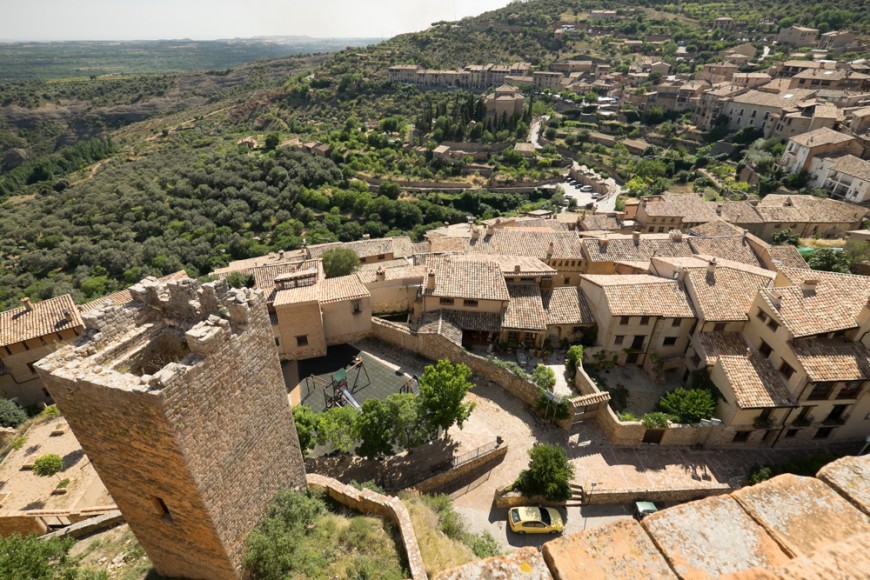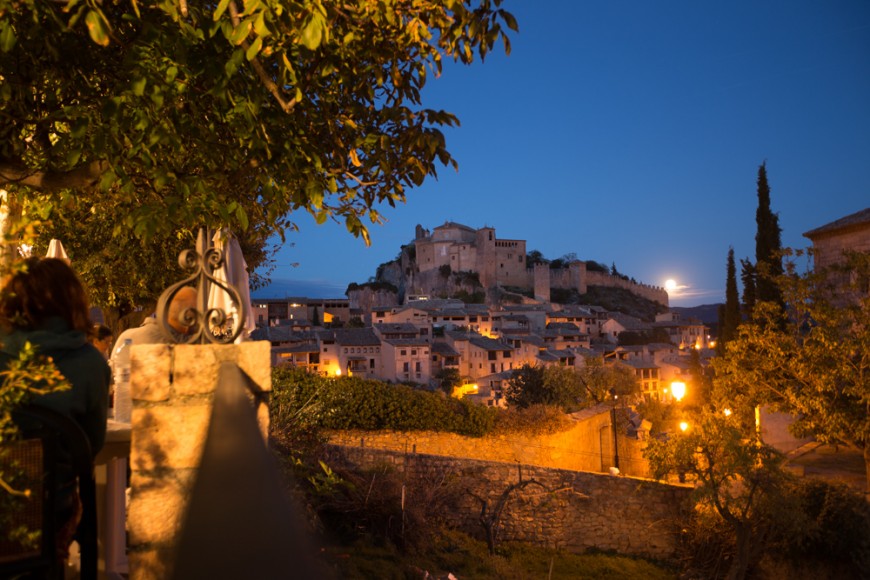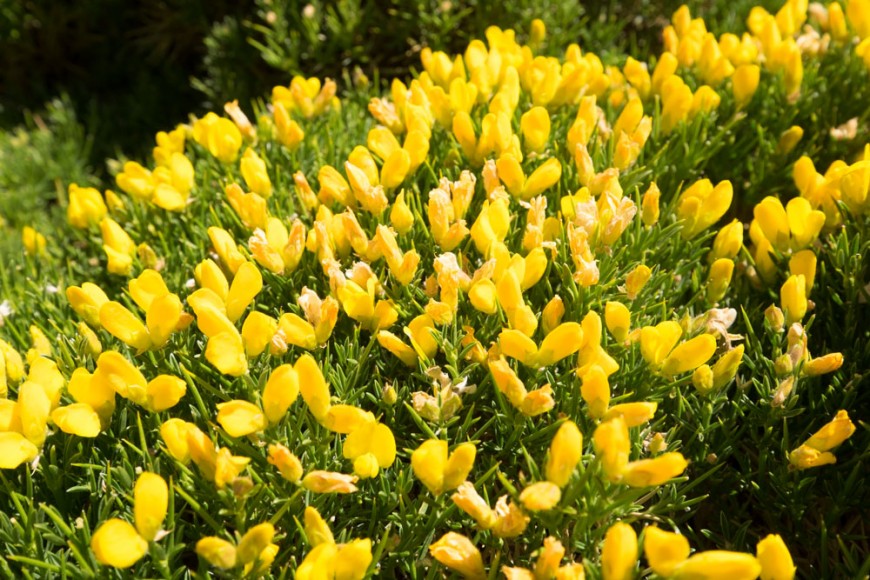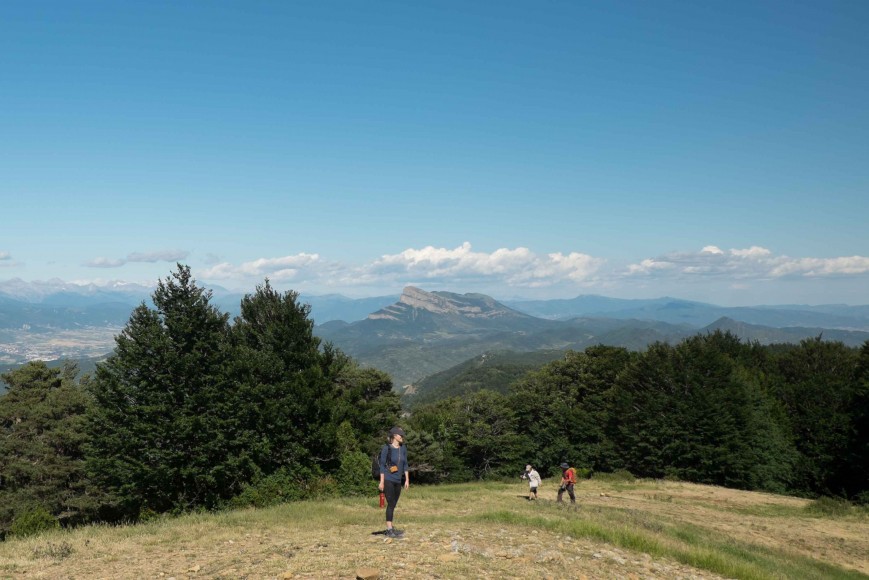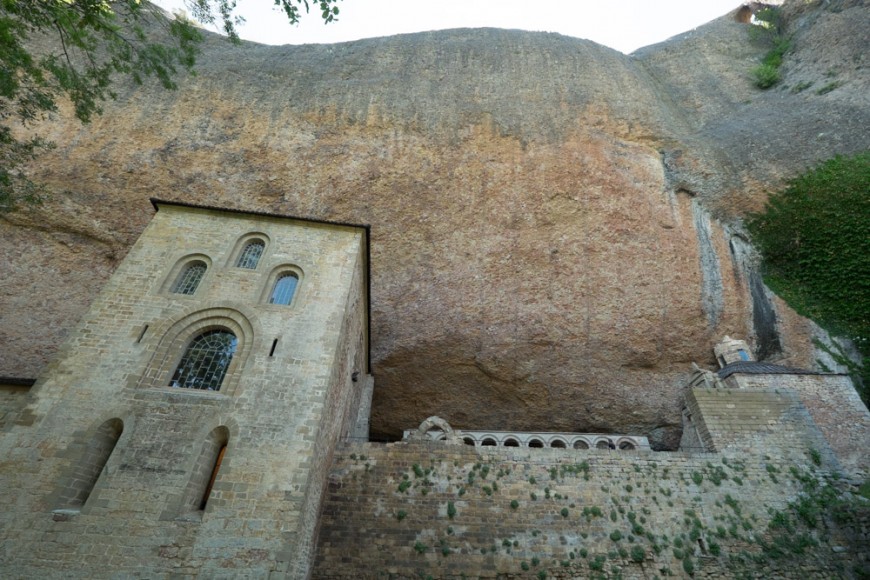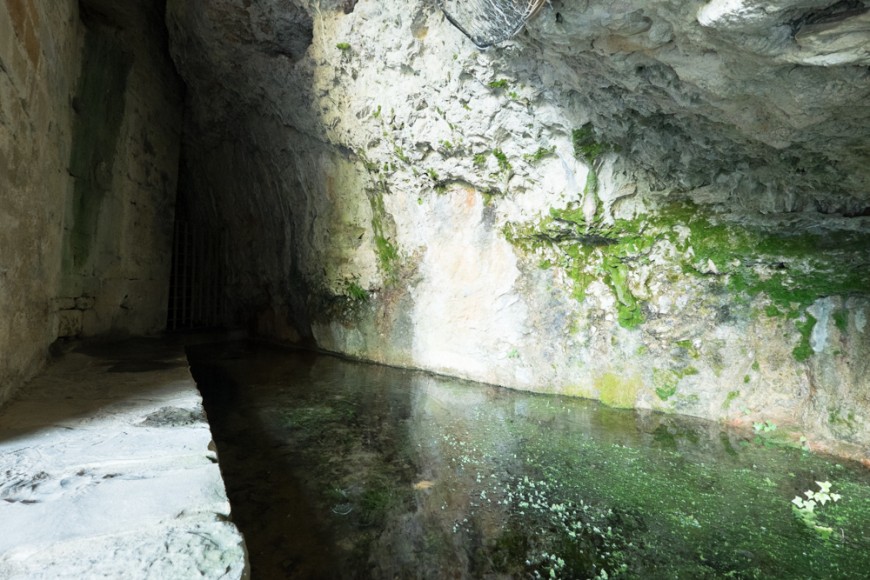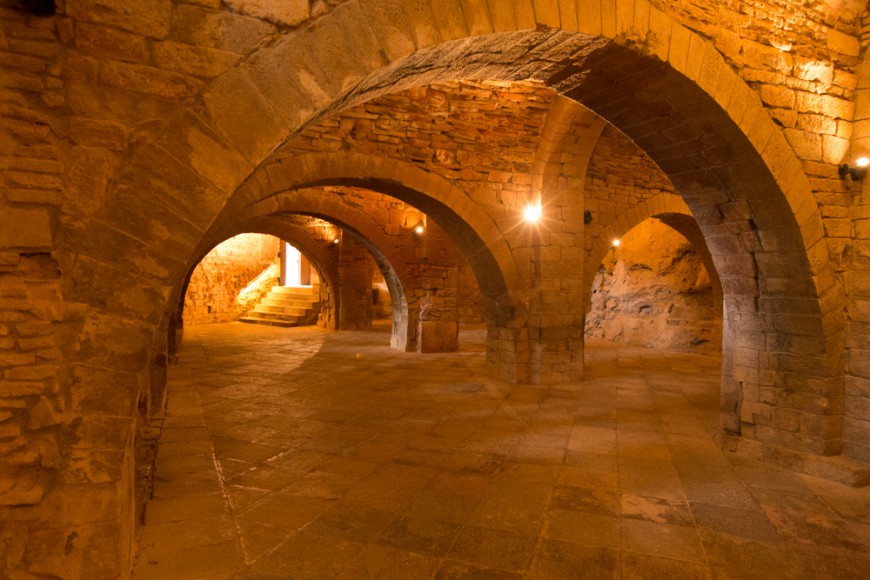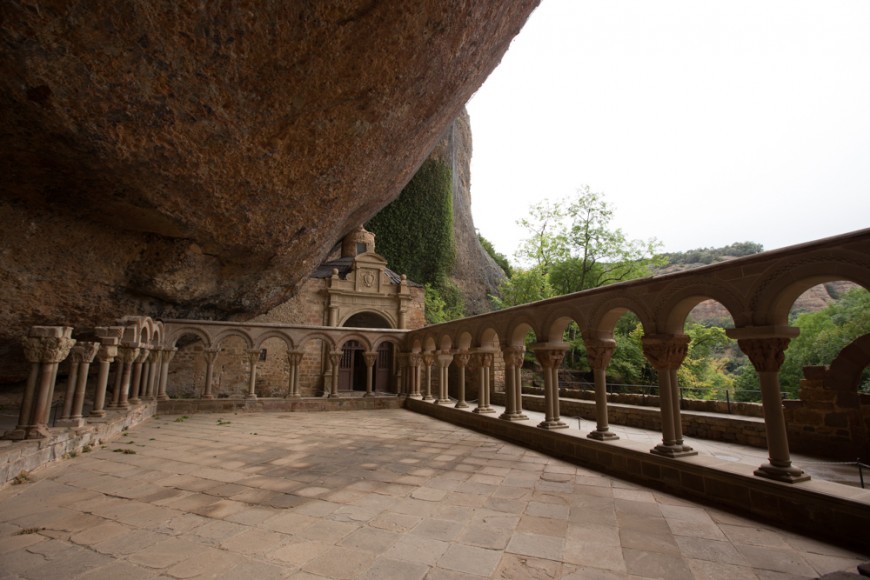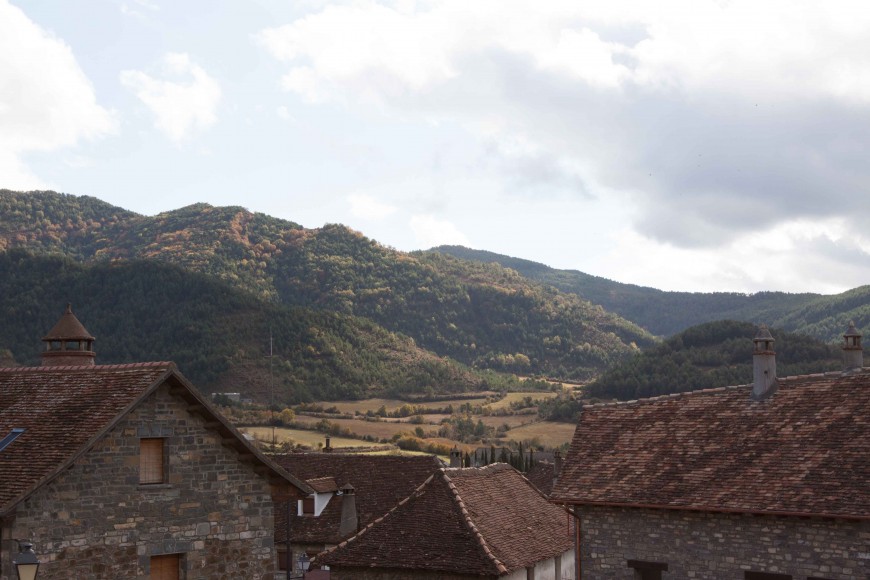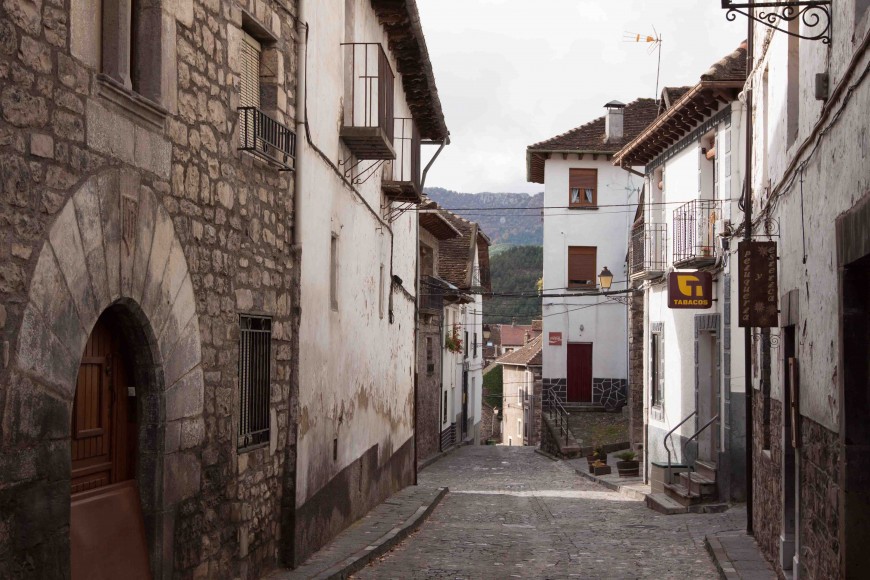The views change dramatically as we drive through the pass.
We left the small hotel in Alquézar after breakfast, where buildings of brick and reddish sandstone are plastered with an earthy clay and have red tiled roofs, nestled in a land of grey and red limestones, which has been aged and mellowed by seeping crystal blue-green streams flowing out of the Guara mountains.
We drive through ancient olive and almond groves, and then into a gorge where we climb into the Pyrenees. Here the rugged mountain slopes are covered in yellow gorse and views stretch to the distant mountaintops marking the French border.
Today is a move day, when the scenery, architecture, and sometimes even the language spoken in the area changes.
Our half way stop is an ancient monastery, hidden in a cave in the cliffs of a conglomerate pine covered mountain.
There is no doubt that this has been a magical place for centuries. It is so well hidden into the side of the mountain, that you have to be within about 100m to know it exists! A natural spring flows out of a cave in the rock. For centuries people would have been able to camp here, in the protection of the overhanging rock, with as much fresh water as they needed flowing out of the cave, totally hidden from view by the mountainside, the mist, and the pine forest, and with an astounding panorama of the snow-topped Pyrenees, which also meant they could easily detect anyone approaching.
This area was once ruled by Ancient Rome, and later by the Visigoth kings. They were eventually defeated by the Moors from North Africa as the Great Caliphate with its capital in Baghdad expanded to incorporate most of Iberia. Throughout these times the cave would have been a refuge for those in trouble from the various conquering regimes.
From the time of the Moorish conquest, before 800 AD, this area held out with help of the Frankish king Charlemagne. It became a Christian ruled buffer zone between France and Al-Andalus, (the Moorish lands of Iberia), which was at first ruled by counts who were vassals of the Franks, and who later became vassals of the Kingdom of Navarre.
At some point the importance of the cave increased and it became a monastery, known as San Juan de la Peña (St John of the Cliff). It received funds from the Counts of Aragón and other nobles. At that time as in the rest of the Iberian Peninsula, the ancient Visigothic Arian rite and its accompanying tantric Mozarabic chant was used. Early construction involved enclosing the overhang into a church with Mozarabic (Mozarab – a Christian living in Muslim Spain) arches covering the overhang. Later they built another church above that and some strangely designed cloisters on the same level as the spring.
While little was recorded in the early years, it is known that here in 1025, during the reign of the Navarrese King Sancho the Great, the religious rite was “modernised” and changed to the Roman rite and its melodic Gregorian chant, which was the standard throughout the French lands and recognised by Rome. Benedictine monks, who had taken refuge at Cluny in Burgundy when fleeing from persecution by the Moors, were brought to the monastery to implement this change, the first in Iberia.
In 1035 upon the death of King Sancho Garcés III, and according to Navarrese custom, the Kingdom of Navarre was subdivided among his three sons, and a forth illegitimate son, Sancho Ramírez, became Count of Aragón and later King. This was the beginning of the Kingdom of Aragón, which slowly grew with the Reconquest and became one of the most powerful in southern Europe. The early Kings of Aragón were buried at the monastery.
After our visit we hike along the ridge above the monastery to a hermitage, have a picnic lunch, and drive the short distance to the small village of Hecho, tucked in a valley, and known for the fact that they still speak their own Aragonese dialect, called Cheso. Here the surrounding dark limestones have been used for construction, and slate or flat stone tiles protect the structures from rain and snow, giving them a solid and sturdy appearance. This is where we are based for the next two days.
It almost seems that we have changed countries, as the scenery and architecture here is so different from Alquézar this morning.
Justin

